I have an R script which highlights certain states on the US Map. I want to highlight two features and I have been having trouble with the 2nd feature. I attached what the current map looks like below.
- Color the whole state red if their bond rating is below a certain grade (this works)
- Give a red downward arrow next to the bond rating as a label on the state if the rating is trending downward over the last few years. These have already been flagged and filtered in the df "dtrend" below.
Any help is much appreciated. Thanks.
#cleanup
statedata <- read.csv(file = "statebondratingsmelted.csv", header = TRUE)
head(statedata)
summary(statedata)
statedata <- subset(statedata, Year==2017)
statedata$Rank = as.numeric(levels(statedata$Rank))[statedata$Rank]
statedata$region <- tolower(statedata$region)
snames <- data.frame(region=tolower(state.name), long=state.center$x, lat=state.center$y)
snames <- merge(snames, statedata, by="region")
dtrend <- filter(mergestate, downwardtrendflag==1)
aaflag <- filter(mergestate, aa_flag==1)
us <- map_data("state")
mergestate <- merge(statedata, us, by="region")
library(ggplot2)
library(ggmap)
# Map Code
ggplot(color="black") +
geom_map(data=us, map=us, aes(long, lat, map_id=region), fill="white", color = "#000000")+
geom_map(data=dtrend, map=us, aes(fill="red", map_id=region), color ="#000000")+
geom_map(data=aaflag, map=us, aes(fill="red", map_id=region), color ="#000000")+
geom_text(data=snames, aes(long, lat, label=Rating), size=3.0, color = "black")+
coord_map()
This is the current output:

statedata <- structure(list(region = c("alabama", "alaska", "arizona", "arkansas",
"california", "colorado", "connecticut", "delaware", "florida",
"georgia", "hawaii", "idaho", "illinois", "indiana", "iowa",
"kansas", "kentucky", "louisiana", "maine", "maryland", "massachusetts",
"michigan", "minnesota", "mississippi", "missouri", "montana",
"nebraska", "nevada", "new hampshire", "new jersey", "new mexico",
"new york", "north carolina", "north dakota", "ohio", "oklahoma",
"oregon", "pennsylvania", "rhode island", "south carolina", "south dakota",
"tennessee", "texas", "utah", "vermont", "virginia", "washington",
"west virginia", "wisconsin", "wyoming"), Year = c(2017L, 2017L,
2017L, 2017L, 2017L, 2017L, 2017L, 2017L, 2017L, 2017L, 2017L,
2017L, 2017L, 2017L, 2017L, 2017L, 2017L, 2017L, 2017L, 2017L,
2017L, 2017L, 2017L, 2017L, 2017L, 2017L, 2017L, 2017L, 2017L,
2017L, 2017L, 2017L, 2017L, 2017L, 2017L, 2017L, 2017L, 2017L,
2017L, 2017L, 2017L, 2017L, 2017L, 2017L, 2017L, 2017L, 2017L,
2017L, 2017L, 2017L), Rating = structure(c(4L, 4L, 4L, 4L, 5L,
4L, 5L, 7L, 7L, 7L, 6L, 6L, 9L, 7L, 7L, 5L, 3L, 4L, 4L, 7L, 6L,
5L, 6L, 4L, 7L, 4L, 7L, 4L, 4L, 2L, 6L, 6L, 7L, 6L, 6L, 6L, 6L,
5L, 4L, 6L, 7L, 7L, 7L, 7L, 6L, 7L, 6L, 5L, 4L, 6L), .Label = c("A",
"A-", "A+", "AA", "AA-", "AA+", "AAA", "BBB", "BBB-", "N/A"), class = "factor"),
Rank = c(3, 3, 3, 3, 4, 3, 4, 1, 1, 1, 2, 2, 10, 1, 1, 4,
5, 3, 3, 1, 2, 4, 2, 3, 1, 3, 1, 3, 3, 7, 2, 2, 1, 2, 2,
2, 2, 4, 3, 2, 1, 1, 1, 1, 2, 1, 2, 4, 3, 2), downwardtrendflag = structure(c(1L,
2L, 1L, 1L, 1L, 1L, 2L, 1L, 1L, 1L, 1L, 1L, 2L, 1L, 1L, 2L,
1L, 1L, 1L, 1L, 1L, 1L, 1L, 1L, 1L, 1L, 1L, 1L, 1L, 2L, 1L,
1L, 1L, 2L, 1L, 1L, 1L, 1L, 1L, 1L, 1L, 1L, 1L, 1L, 1L, 1L,
1L, 2L, 1L, 2L), .Label = c("0", "1", "FALSE"), class = "factor"),
aa_flag = c(0L, 0L, 0L, 0L, 1L, 0L, 1L, 0L, 0L, 0L, 0L, 0L,
1L, 0L, 0L, 1L, 1L, 0L, 0L, 0L, 0L, 1L, 0L, 0L, 0L, 0L, 0L,
0L, 0L, 1L, 0L, 0L, 0L, 0L, 0L, 0L, 0L, 1L, 0L, 0L, 0L, 0L,
0L, 0L, 0L, 0L, 0L, 1L, 0L, 0L)), .Names = c("region", "Year",
"Rating", "Rank", "downwardtrendflag", "aa_flag"), row.names = c(NA,
50L), class = "data.frame")

